BenQ PD3220U 32 inch DesignVue Monitor review: creative appeal
The BenQ PD3220U ticks off a whole lot of things for creators, as well as a lot of features. But at that price, are they enough?
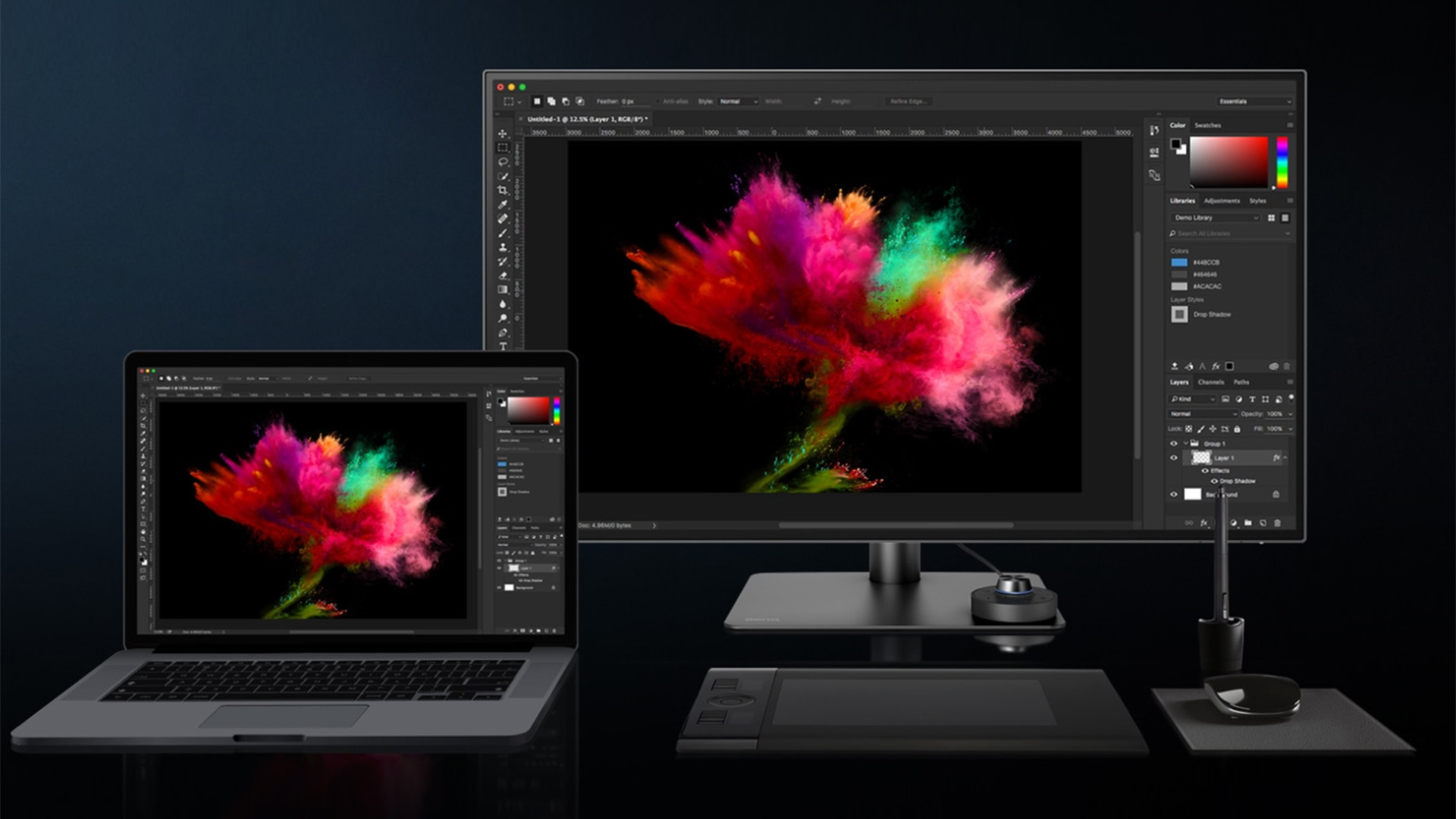
Content creators require a few things from their monitors, and the BenQ PD3220U DesignVue monitor ticks off many of those things while adding a few nifty tools they would not have expected. So, while this 31.5-inch 4K panel is also on the pricier side, it’s worth it for the right type of creators.
-
+
Screen looks gorgeous
-
+
Lots of ports
-
+
Incredibly feature-rich
-
+
Comes pre-calibrated
-
-
Speakers are disappointing
-
-
Not ideal for fast-paced gaming
-
-
Lacks more recent HDR formats
Why you can trust T3

There is no doubt that the BenQ PD3220U DesignVue is one stunner of a 4K monitor, touting that glorious IPS panel, great color space coverage, and a trove of features to impress most users. But, content creators have a longer list of demands when it comes to their monitors, and every display claiming to be made specifically for such a discerning audience needs to satisfy those demands, which is perhaps why most of them come with such a hefty price tag.
The BenQ PD3220U DesignVue Monitor certainly has that last part down. But, are its features enough to please its target audience? Graphic designers working with prints might not be pleased with the lack of Adobe RGB color space. While photographers and video editors could be concerned at the lack of newer HDR formats. However, for the right kind of content creator, the BenQ PD3220U is absolutely worth it.
BenQ PD3220U DesignVue monitor review: price and release date
The BenQ PD3220U DesignVue Designer Monitor isn’t exactly fresh out of the oven, having hit the shelves in the spring of 2019. However, it’s been so well-received that it’s still making the rounds in the tech and creative worlds.
As one would expect from a monitor designed specifically for creators, it does cost a pretty penny, asking a whopping $1,199 in the US, £1,059 in the UK and AU$2,199 in Australia. That might be a lot for the average consumer but considering that some of the best monitors for video editing will set you back more than $3,000/£3,000, this display is actually mid-range. Unfortunately for BenQ, there are some cheaper rivals out there that might just be as appealing, if slightly lacking in features.
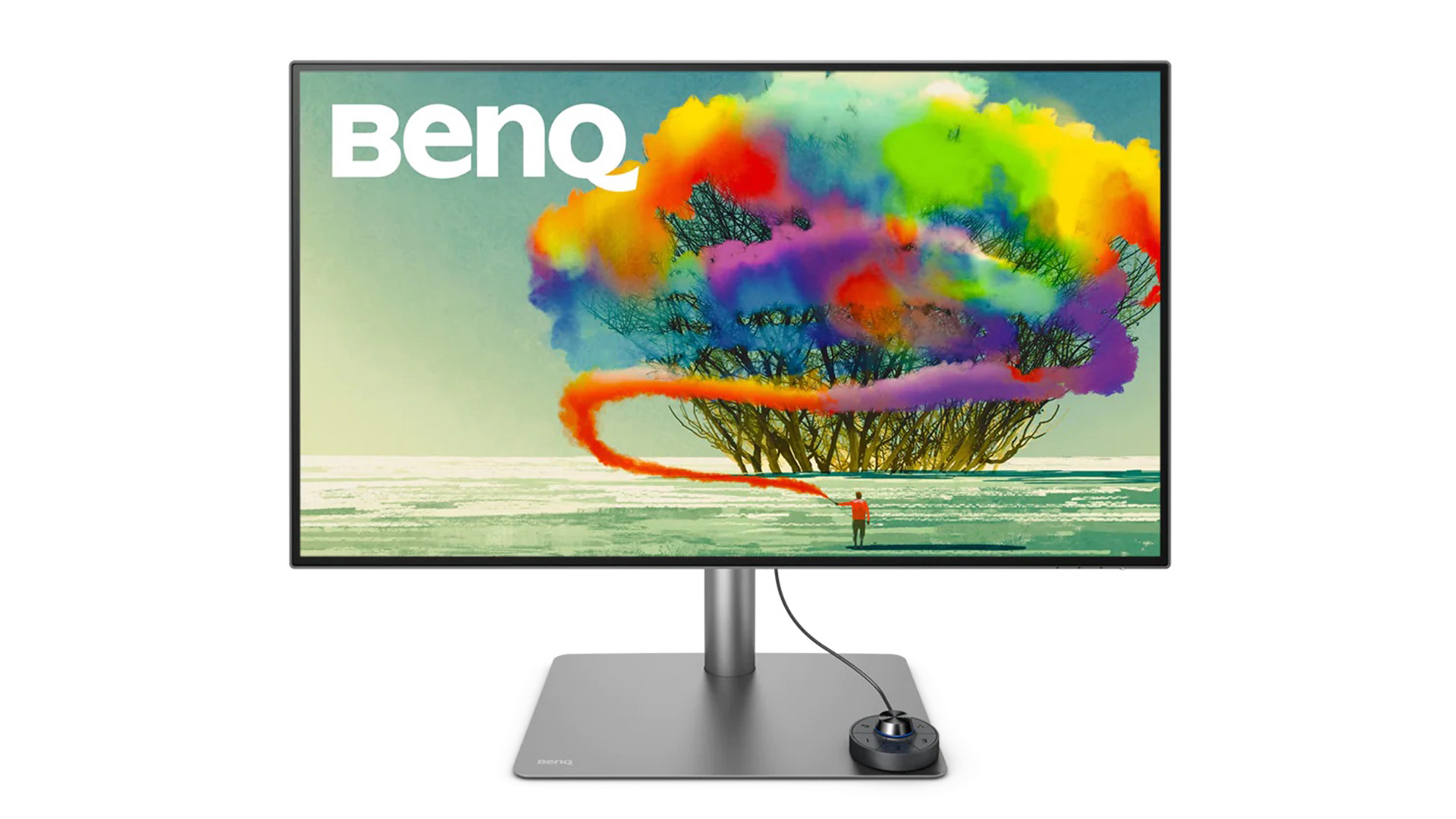
BenQ PD3220U DesignVue monitor review: Design
When it comes to monitors for creatives, the BenQ PD3220U DesignVue Designer Monitor plays its role seriously. It certainly lookis the part with its smart, sleek, and minimalist gray-on-black exterior. If you’re planning on hooking this up to your MacBook Pro 16-inch, Mac Mini, or Dell XPS 15 (2021), it won’t take long to fit right into your setup.
The 31.5-inch IPS panel also boasts bezels that are thin on all sides, which gives it a nice ultra-modern look. The dark gray aluminum stand comes with a clip on the back for cable management, and a nice wide, flat, heavy base to keep it stable when you’re making adjustments.
Speaking of which, the BenQ PD3220U has great ergonomics, which is something post-production editors certainly appreciate. It can tilt five degrees down and 20 degrees up, swivel 30 degrees in each direction, and pivot 90 degrees for portrait mode. It also has a 150mm (5.9 inches) height adjustment.
Just be prepared to lose a lot of desk space to fit this monitor in. Although not particularly massive, its wide base does require a decent amount of space. Luckily, the top of the base itself can moonlight as storage for your phone, peripherals, and of course, the HotKey Puck that comes included with it.
Ports are downward-facing, and there’s a backplate to cover the port area for a cleaner look, as well as to prevent dust and debris from getting into them. There are plenty of ports on hand – creators do need as many of those as they can get – including two HDMI 2.0, one DisplayPort 1.4, and not one, but two Thunderbolt 3 ports. This means you can connect two MacBook Pros (or any two Ultrabooks, really) to it at the same time without issue. One of these Thunderbolt 3 ports even boast 85W power delivery and DisplayPort Alt Mode.
There is a USB hub, albeit a mini one, on the right side for peripherals. It has one USB-A port, a USB-C port, and a headphone jack. It would have been nice to have more ports on this hub, especially because the monitor boasts a KVM (Keyboard Video Mouse) Switch.
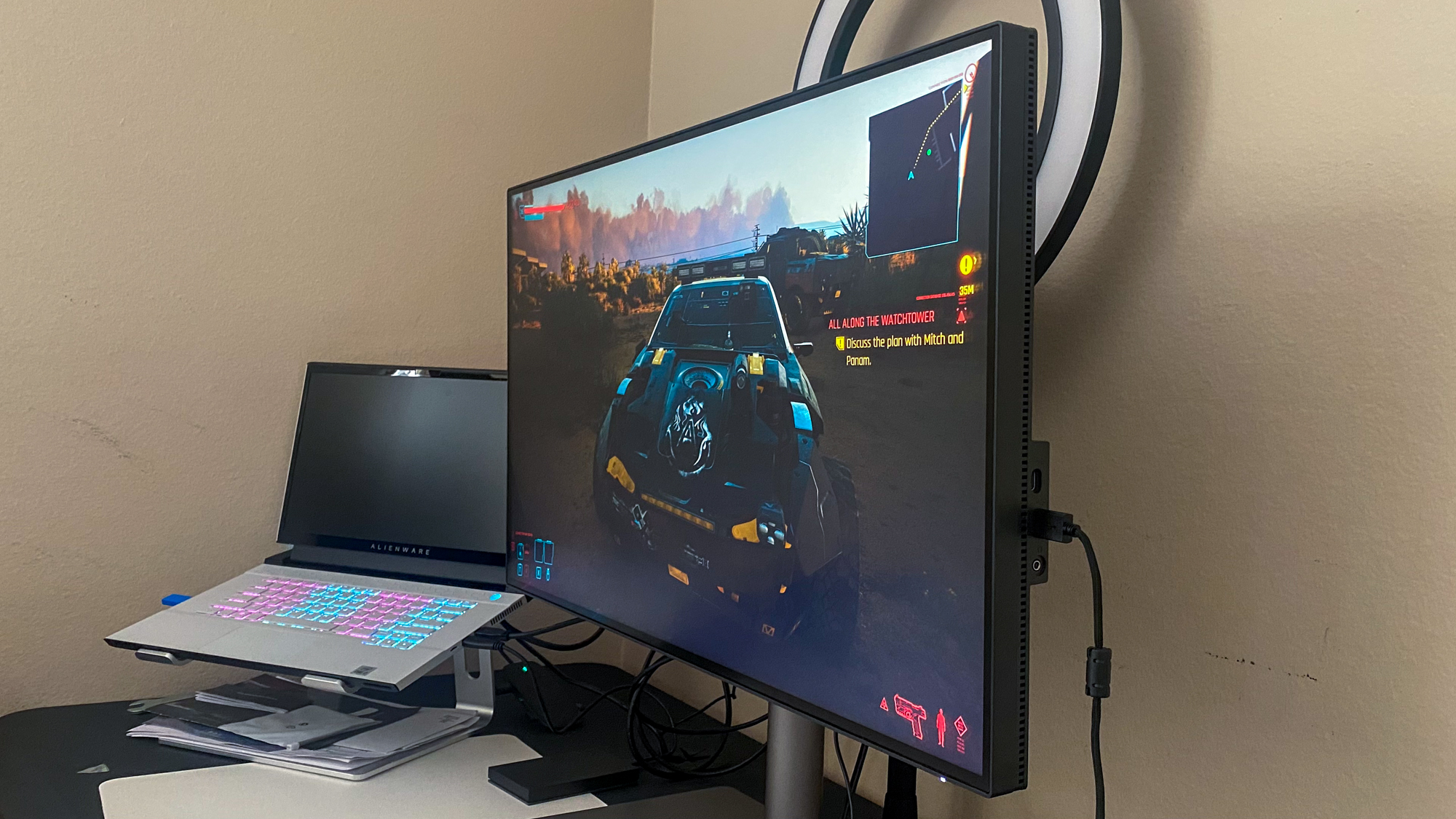
BenQ PD3220U DesignVue monitor review: Features
The KVM Switch isn’t the only feature the BenQ PD3220U DesignVue Designer Monitor comes with, but it’s definitely one of the niftiest ones. If you’re unfamiliar with it, it essentially lets you use the same mouse and keyboard on the different source computers connected to the monitor.
I am able to, for example, use the same mouse on both my Alienware m15 and my MacBook Pro, which are simultaneously connected to the BenQ PD3220U, by plugging that mouse into the USB-A port on the monitor’s USB hub. The only thing is, if one of your source PCs are connected via HDMI or DisplayPort, you also have to link it to the monitor via the USB Type B port in order the mouse to work on that specific PC – something you wouldn’t need to do if both your sources are connected via Thunderbolt 3.
The BenQ PD3220U does come with BenQ’s second-generation HotKey Puck, which has six buttons and a dial. All these can be remapped to an assortment of settings to help simplify a creator’s workflow, like brightness, input and the monitor’s different color modes. You can’t just remap these buttons to whatever you want, however. You do have to choose from a menu of pre-selected options. Luckily, these pre-selected functions or settings are appropriate and make perfect sense, especially for creatives.
What doesn’t make perfect sense is how BenQ named these buttons on the OSM at default so there might be a bit of a steep learning curve here, depending on the user.
There are several ways to see several sources at once, all of which are easy to set up via the OSM: Picture in Picture (PiP), Picture by Picture (PbP), and PbPx4, which is Picture by Picture with 4 sources. These prove to be excellent multi-tasking tools when you’ve got several source PCs connected. As is the Dual View feature, which allows creators to simultaneously view their creations in different picture modes for comparison.
There are 13 different color modes on hand for creators, and some correspond to different color gamuts like DCI-P3, sRGB, and REC.709. There’s also a CAD/CAM mode, as well as a user mode where previously grayed out settings for color temperature, hue, and gamma become accessible. One of these modes also includes what’s called an “M-Book mode,” which automatically adjusts and syncs to Macbook for a more consistent color representation.
A feature that has proved to be a bit disappointing is the set of two 2W speakers. Not only is there no low end to these speakers, but the mids are recessed and the volume just cannot get loud enough, making them sound somewhat hollow and nasal. Although one can’t really expect much from monitor speakers as a rule, let alone 2W ones, I do feel that BenQ could have skipped them altogether, which could have helped lower the price.
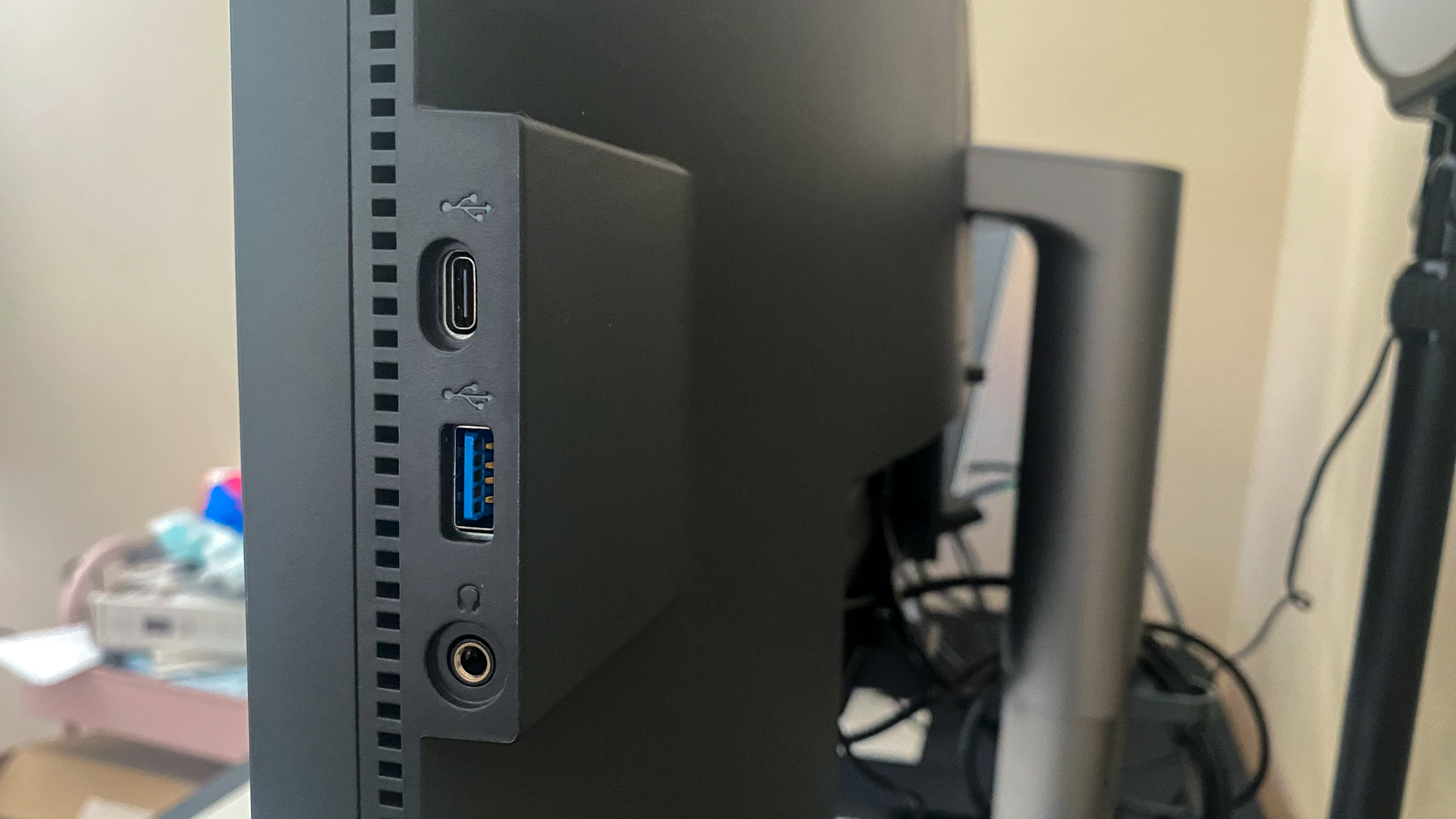
BenQ PD3220U DesignVue monitor review: performance
Even to the most discerning eye, the BenQ PD3220U DesignVue Designer Monitor looks gorgeous – not to mention, immersive, despite the lack of curvature. The picture quality is clean and crisp, unsurprising thanks to its ultra-HD resolution, and its refresh rate is respectable (or perhaps common on 4K displays). The anti-glare coating also helps keep annoying reflections and light glares at bay, which truly helps when you’re trying to focus on your creative process.
The 250 nits brightness is disappointing, however. As is the singular HDR10 support and contrast ratio of 1,000:1. That’s especially considering its price range and its rivals.
Luckily, the BenQ PD3220U DesignVue Designer Monitor makes up for those with its color coverage. Its 100% Rec.709,100% sRGB, and 95% DCI-P3 color spaces certainly meet post-production work requirements, though the lack of Adobe RGB color space rating might disappoint graphic designers.
It also boasts PANTONE and CalMAN verification for color accuracy out of the box, as well as BenQ’s AQColor technology. BenQ calibrates the display at the factory, following industry standards and getting third-party certification to ensure that photographers and video editors won’t have to do the fine-tuning themselves.
Color reproduction is fantastic and vibrant, despite the lack of brightness, and it has color accuracy the will please creators. It’s just as terrific for media consumption as it is for editing, with YouTube videos and movies like Beautiful Planet and Star Trek Beyond looking very detailed and rich. While it doesn’t offer Dolby Vision or HDR10+, it does have HDR10, which shows up as a color mode and is fairly subtle, though you do get a bit more detail in dark scenes.
Although the BenQ PD3220U isn’t specifically a gaming monitor, I have tested it with some of the top games right now. It lends itself incredibly well to titles like Cyberpunk 2077, Red Dead Redemption 2, and Resident Evil, at least when it comes to color reproduction and detail. But, with a 60Hz refresh rate, it can only do so much with busier games and faster-paced scenes. I have noticed some stuttering and the occasional screen tearing with Cyberpunk 2077 and Resident Evil Village. Luckily, the monitor comes with V-Sync, which saved the day.
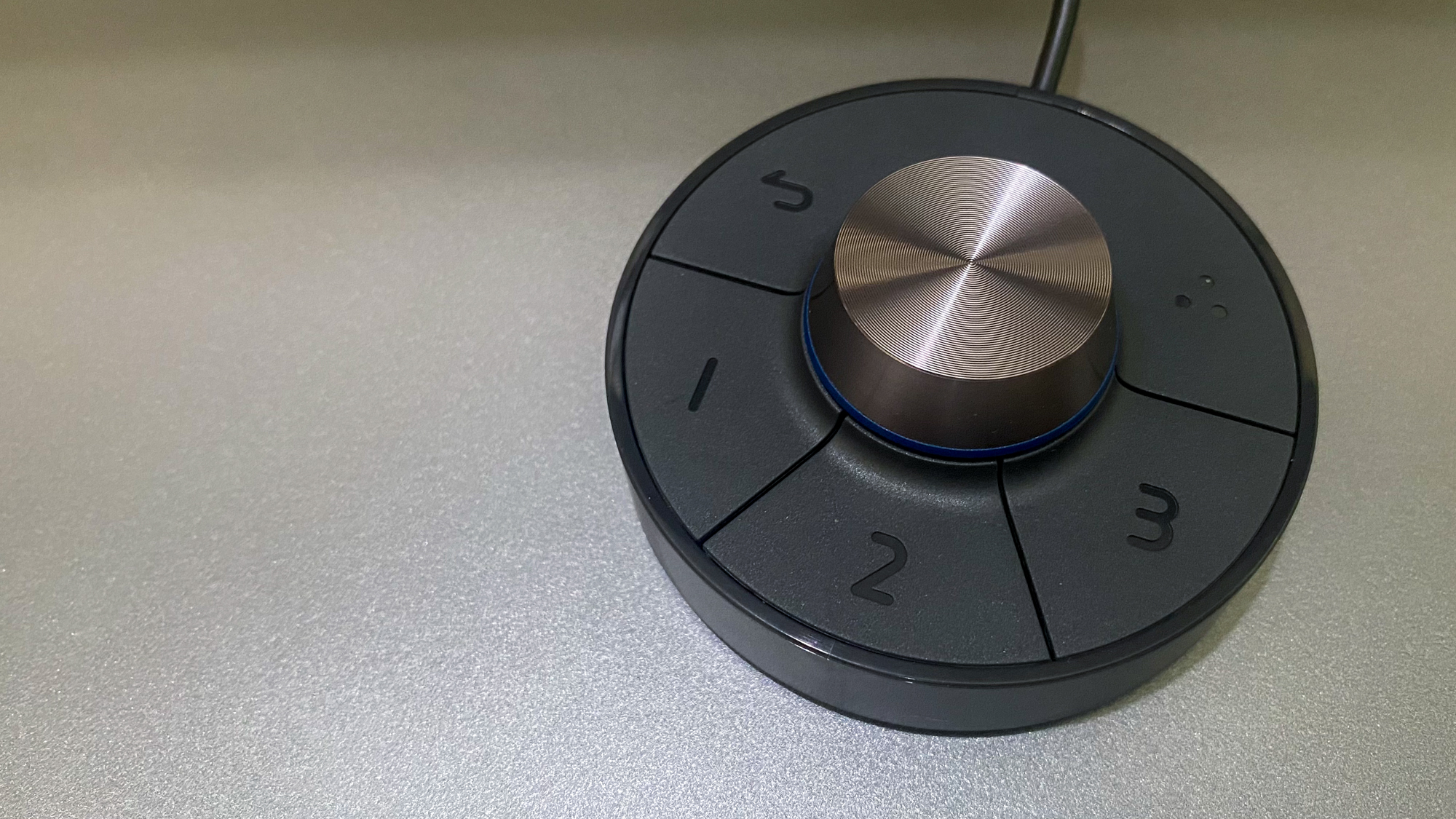
BenQ PD3220U DesignVue monitor review: Verdict
The BenQ PD3220U DesignVue Designer Monitor is a terrific display that delivers gorgeous picture quality with great color coverage and reproduction overall, incredibly detailed images, nice ergonomics, and a plethora of handy extras for its target market. It also comes pre-calibrated and boasts a lot of ports and features for multi-tasking. Having it as a display gives you a higher level of immersion, whether you’re cutting or grading your videos or consuming the next big blockbuster.
At the same time, it has missed out on key features that many of its rivals around the same price range do offer. These include newer HDR formats, decent Adobe RGB coverage, higher brightness levels, and even better contrast ratio, which in a way limits it as the creator monitor it’s trying to be.
So, is it worth the asking price? It is for photographers, video editors and other post-production professionals with a mid-sized budget.
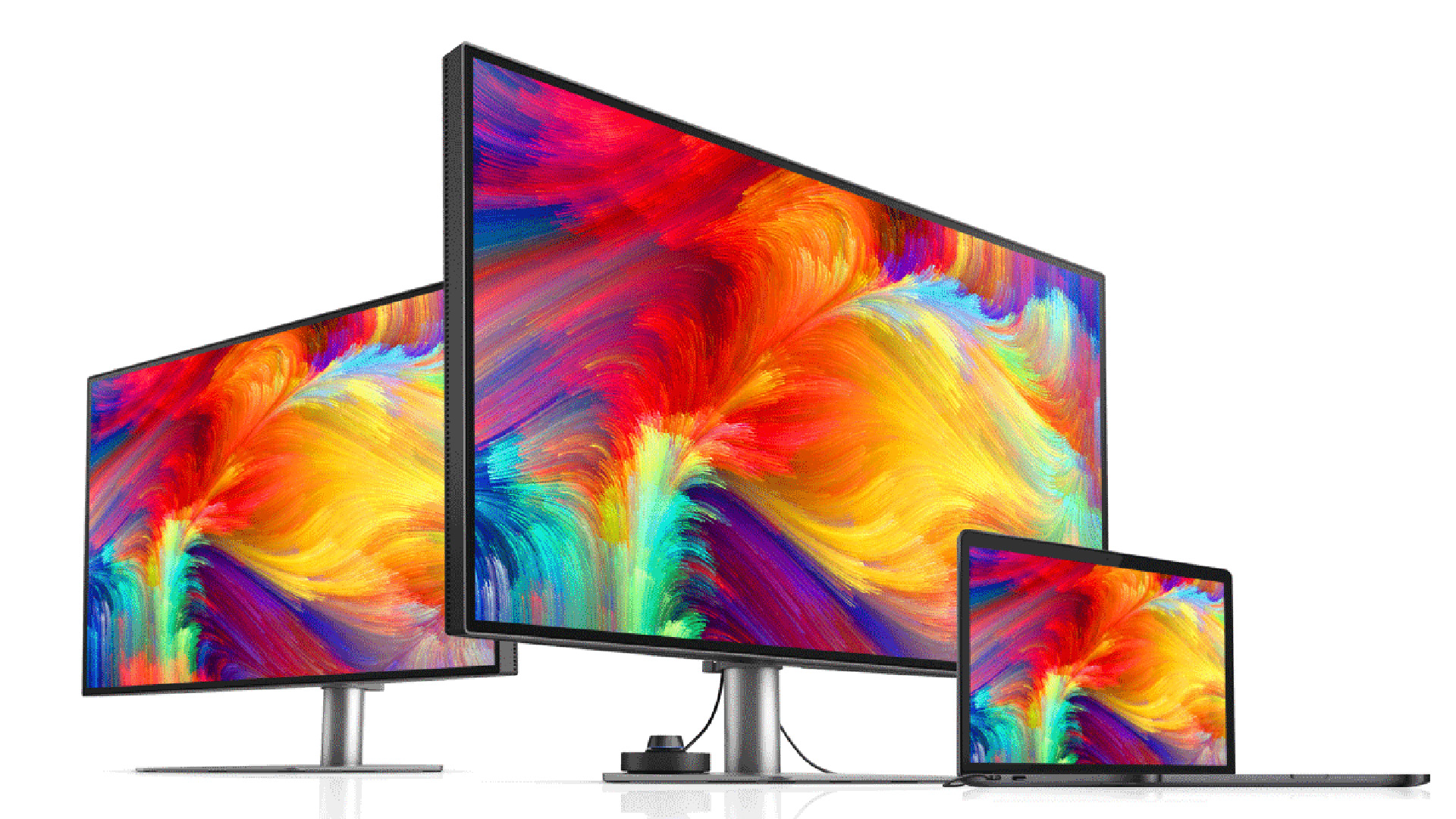
BenQ PD3220U DesignVue monitor review: Also consider
Creators on a smaller budget should consider the LG 32UN880 UltraFine Display Ergo. One of the best monitors for video editing right now, it comes with similar features like 95% DCI-P3 color gamut, HDR10, 4K resolution, and 60Hz refresh rate, only with 350 nits of brightness and a much more affordable price tag.
Those who need that Adobe RGB coverage, on the other hand, might want to splurge a bit more on the BenQ SW321C PhotoVue, which has 99% AdobeRGB as well as 95% P3 and 100% sRGB coverage. It’s also a 4K monitor with 250 nits of brightness, HDR10, and 60Hz refresh rate.
Sign up to the T3 newsletter for smarter living straight to your inbox
Get all the latest news, reviews, deals and buying guides on gorgeous tech, home and active products from the T3 experts
Michelle Rae Uy is a tech and travel journalist, editor and photographer with a bad case of wanderlust. She is a regular contributor for IGN, TechRadar and Business Insider, and has contributed to Thrillist, Paste Magazine, Nylon, Fodor's and Steve's Digicams. Living mainly in California with her adorable cats, she splits her time between Los Angeles, London and the rest of the world.
-
 Apple CarPlay gets an essential free update to fix recent issues
Apple CarPlay gets an essential free update to fix recent issuesHaving iPhone disconnection issues in your car? Don't worry, a fix is now available
By Rik Henderson Published
-
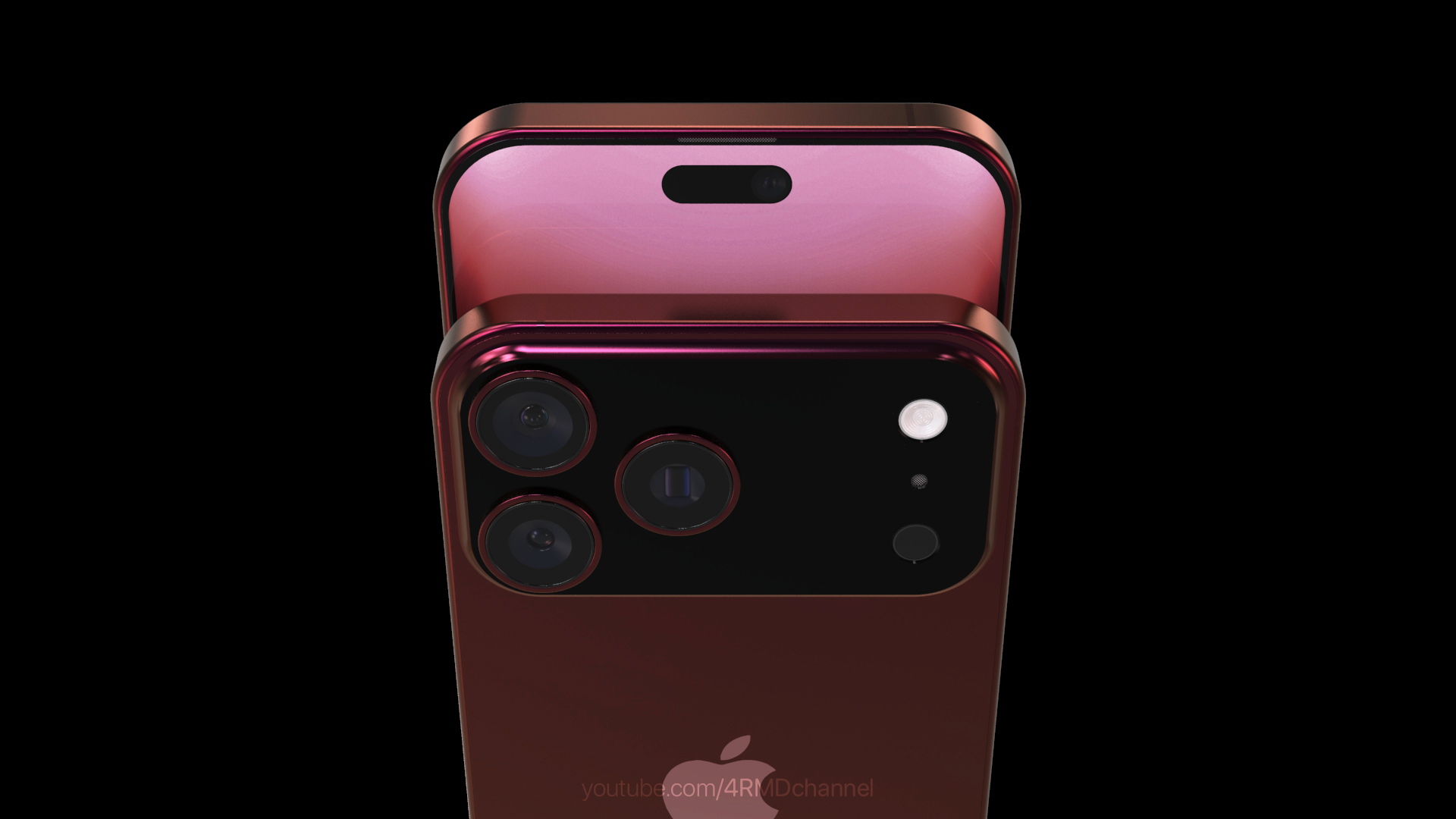 New iPhone 17 Pro Max renders give us the best look yet at the flagship phone
New iPhone 17 Pro Max renders give us the best look yet at the flagship phoneThis is going to cause a stir
By Sam Cross Published
-
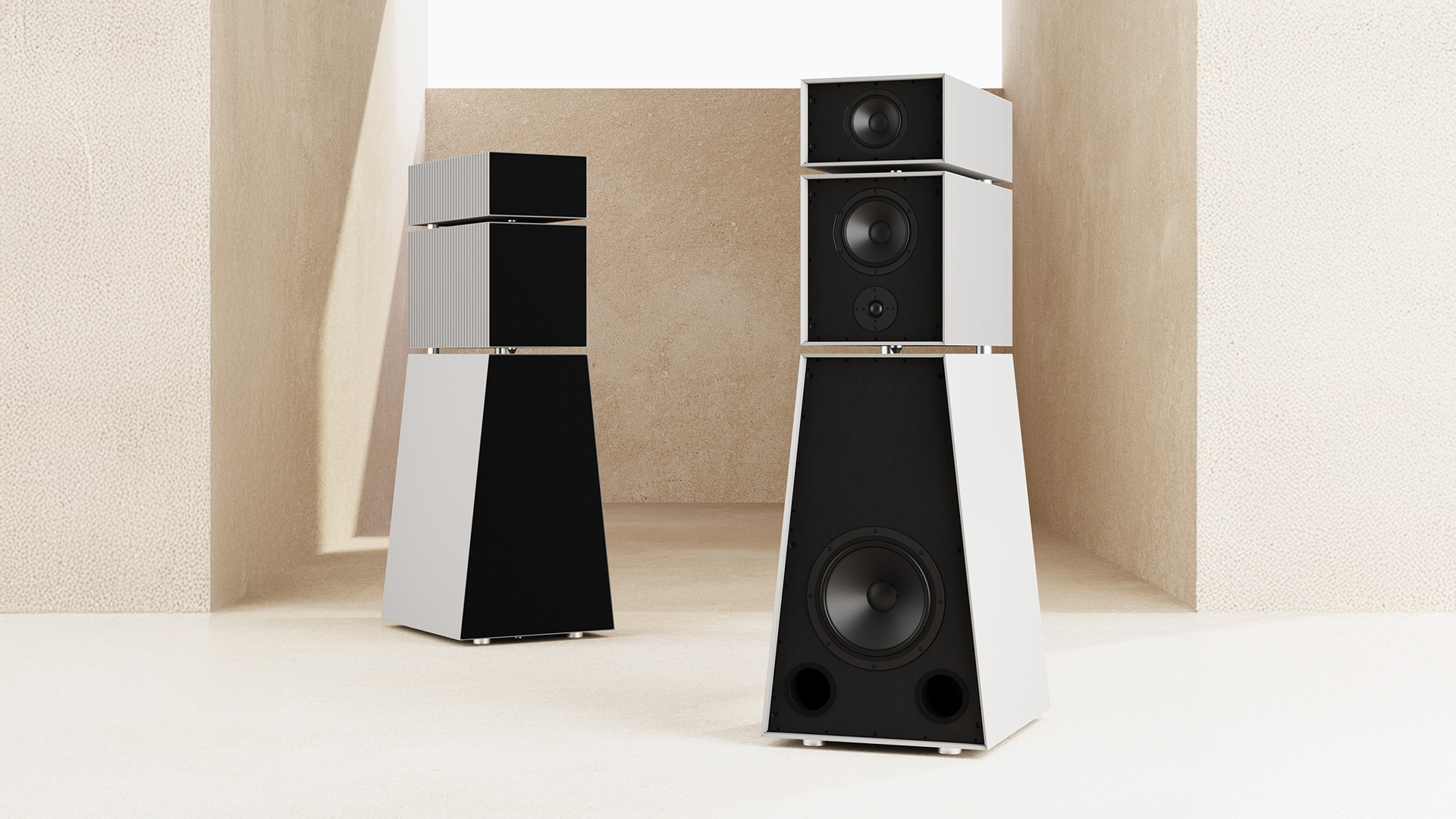 Meet Rhea and Theia, the speaker superstars with supercar prices
Meet Rhea and Theia, the speaker superstars with supercar pricesGoldmund's superbly sci-fi speakers are out of this world
By Carrie Marshall Published